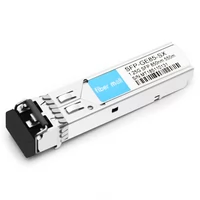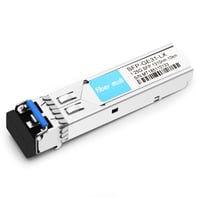As more networks become dependent on high speed and reliable connectivity, it becomes essential to understand its enabling components. Meraki fiber modules, particularly the small form factor pluggable (SFP) and optical transceiver units, significantly improve network metrics concerning performance and, more so, scalability. This guide is intended to give users an in-depth understanding of the functions of these modules and the technical aspects that govern their performance as components of networking structures. To that end, the guide would delve into the functioning of SFP and optic transceivers in achieving reliable data transmission over distributed complex networks, allowing the organizations to accomplish their challenging interconnectivity goals. Whether you are an IT manager looking for practical approaches or an engineer who would like to gain a deeper insight into the theoretical concepts, the guide is intended to be educational and technical-oriented for every level of expertise.
What Are Cisco Meraki Fiber Modules and How Do They Work?
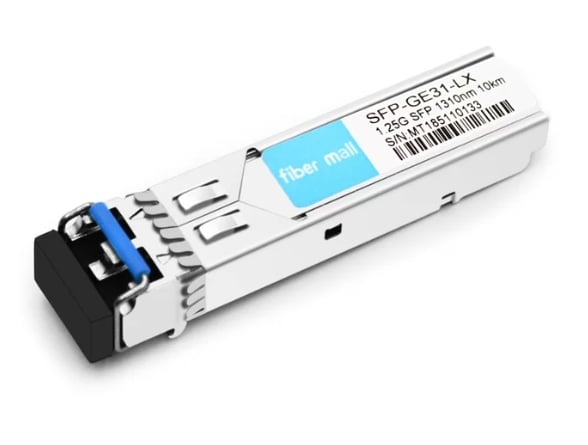
Cisco Meraki fiber modules are necessary network devices that allow for data transmission over optical fiber networks at a high speed. They are available in various shapes but mainly SFP (Small Form-factor Pluggable) modules, which are small, lightweight, and easy-to-install components mounted on compatible routers and switches. These optical devices work by accepting electrical signals from a device and changing them into light signals that communicate through the fiber optic cable and vice versa. They enable effective short- and long-distance communication using different wavelengths and transmission protocols, which help implement configurations like LAN and WAN. Cisco Meraki SFP modules add value to the network’s configuration, scalability, and performance, making them critical components in today’s network architectures.
Understanding the Basics of SFP Modules
SFPs are crucial components in every networking infrastructure, as they serve as the interface that allows the connection between the switches or routers and the fiber optic cables used to transmit data. Their primary purpose is to receive electrical signals produced by network devices and convert them into optical signals amenable for transmission in fiber optic wires. They also receive returned optical signals and convert them to electrical form again. Such modularity provides flexibility during installation and upgrade procedures as SFP modules are manufactured to be hot-swappable, implying that they can be taken out or inserted back without first shutting down the whole system. Such modules can achieve various short and long ranges-through multiple configurations and fast data rate support, providing many options in the network solutions.
The Role of Optic Transceivers in Cisco Meraki Networks
Optic Transceiver modules are critical components for Cisco Meraki networks as they allow transmitting large volumes of data and improve network speed efficiency and effectiveness. These devices are responsible for interfacing between electrical and optical signal transmission, which is essential if fiber cabling is used for data transmission over long distances. In the context of Cisco Meraki systems, transceivers facilitate the simple and rapid expansion of the system’s architecture by integrating modular building blocks that meet various network needs and build capacity as required. Optic transceivers provide flexibility and scalability of solutions, which aid in properly managing network traffic with higher reliability and information transfer efficiency across digital networks.
How to Choose the Right Fiber Module for Your Network
Several aspects should be taken into account to make the proper choice about the type of fiber module to use. Determine the figures of the expected throughput of the network to avoid exceeding the specifications of the assumed transceiver. Then, consider the distance the data optoelectronic may need to reach and choose a distance that meets your network’s inner needs, whether short or long. Assess the connector type and compatibility with existing sub-networks for easy integration. Other things to consider are the temperature range, including the physical operating conditions, to ensure that the module will be dependable and stable in the specific environment. Evaluation of these criteria would potentially advance the performance and flexibility of your networking solution.
How do you install and configure Cisco Meraki SFP modules?
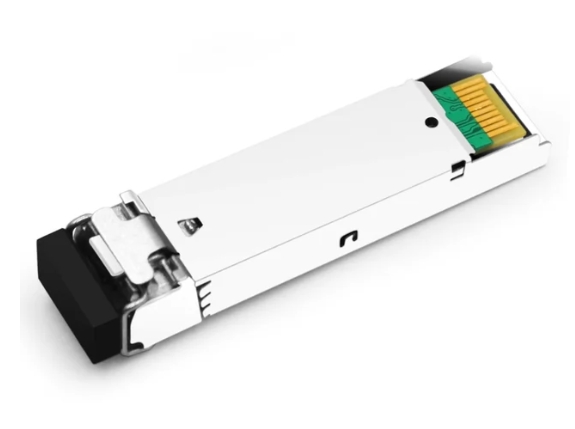
Step-by-Step Guide to Installing SFP Modules
- Prepare the Workspace: To protect the SFP module from damage, start by organizing the necessary tools, including an anti-static wrist strap, and placing them in a clean, static-free workspace.
- Power Down The Device: The network device should be turned off first to avoid damage, and then the SFP module should be placed. Make sure that no part of the equipment is still on.
- Insert the Module: Carefully remove the SFP module from its packaging. Gripping the module with its substrate lining, slot the module into the designated slot. This should be done in a backward motion. Apply some pressure to insert the port into the module and then lock it into position with a click sound.
- Connect the Fiber Optic Cable: Plan an adequate fiber optic cable that satisfies the module’s requirements. The cable’s LC connector should be carefully pushed into the port of the SFP module, and a click should indicate the proper connection between the cable and the module.
- Power On The Device: Start the device after properly inserting and connecting the module and cable. While doing this, ensure that the module is working properly. Check the LED lights to confirm that the connection is established.
- Verify the Connection: First, check whether the device status can be accessed through its interface. Ensure the data transmission is ok and resolve any data transmission problems involving the fiber transceiver as necessary.
Configuration Tips for Cisco Meraki Networks
Proper configuration protocols must be followed to ensure efficient and secure Cisco Meraki networks. Meraki’s cloud-based dashboard should be the first step to managing your network system settings. This single-pane approach enables one to manage and monitor things on the go. Use VLANs to isolate and better secure your traffic using network segmentation. WPA3 should be used for robust authentication, and, if necessary, the possibility of setting up network policies for devices to be served with the latest firmware on demand should be regarded as applicable to minimize the risk exposure. Also, native features such as intrusion prevention, layer seven firewalls, and content filtering should be used to protect the network. Make it a habit to look at the Meraki insights’ network analytics to adjust settings to increase the system’s efficiency.
Best Practices for Ensuring Optimal Performance
- Network Monitoring and Analysis: Carry out regular analysis of the network’s state utilizing sophisticated analytical tools to assess compliance with delivery deadlines and service level agreements. Such tools allow for the understanding of traffic dynamics and what could lead to performance constraints, thus enabling prompt actions to be taken concerning requisite changes to the service/delivery performance to optimize it.
- Regular Firmware Updates: Make it a point to regularly update all network devices and applications to the newest firmware version. This approach increases performance while addressing vulnerabilities and increasing the network’s robustness against potential security exploits.
- Load Balancing and Redundancy: Apply load balancing so that the network traffic is evenly distributed among the available servers and devices. Moreover, provision for redundancy by establishing failover systems to minimize the service outage period while ensuring that the services remain active during failures or routine maintenance.
What Are the Key Features of the Meraki MA-SFP-1GB-SX Compatible SFP?
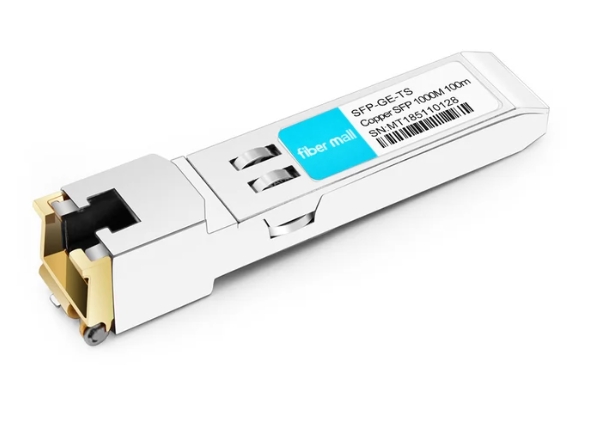
Exploring the Compatibility with Cisco Meraki Devices
The Meraki MA-SFP-1GB-SX has been constructed to ensure compatibility with as many Cisco Meraki devices as possible to improve network transmission through gigabit fiber optic links. According to other reputable sources, this SFP module has been actuated for easy operation and integration. It can work comfortably with not only Meraki switches but also other switches manufactured by Cisco. It can transmit data on a multimode fiber over distances of 550 meters at the 850nm wavelength. Its interoperability extends to sustaining good high-speed connections, which is critical in regions with high bandwidth and low latency, especially with fiber transceivers. Updating the firmware of the Meraki devices from time to time should also improve the module’s performance within the network ecosystem.
Understanding the Benefits of Multimode Fiber
According to my studies around the leading sources of fiber optics telecommunication networks, multimode fiber has several advantages. Firstly, it is usually cheaper for connectors and installation processes, making it ideal for short to medium-range applications. Multimode fiber is very useful in data network centers and campuses where high-speed and high volumes of data are being moved from one point to another. It can also combine more than one data signal to enhance bandwidth. Because of its larger core diameter, the alignment of the fibers and network devices is more straightforward, and therefore, the cabling of the network is less complicated. This makes multimode fiber the best option to cut costs and still have a good data network compared to single-mode fibers.
Customer Reviews and Experiences with MA-SFP-1GB-SX
Customer reviews on various online sources concerning MA-SFP-1GB-SX explain how the item is reliable and easy to integrate. Threads on tech forums frequently emphasize its ease of installation and superior operation with numerous Cisco systems, especially the MX84. Numerous assessments note the reliable provision of high-speed connection even in some problematic network operating environments, a prerequisite for any business. Regarding its installation, many customers comment about the ease of installation and set up, and maintenance are without complications. Even though most views about the device are favorable, some users have noted that it requires several updates from time to time to work effectively in the fastest ever-changing network environments. Overall, the MA-SFP-1GB-SX is preferred for its efficiency and compatibility with working under pressure; hence, it is deemed suitable for use in great and manageable networking systems.
How Do I Troubleshoot Common Issues with Cisco Meraki Fiber Modules?
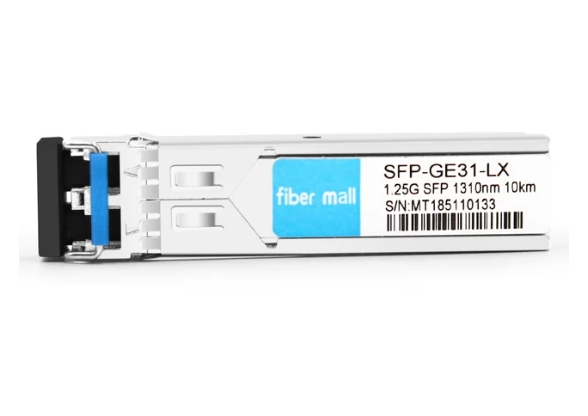
Identifying and Resolving Connectivity Problems
Common connectivity issues related to fiber modules installed on Cisco Meraki devices can be resolved by checking the correct physical connections, including all cables. Next, it is essential to check the module’s compatibility with the transceiver and the other equipment in the network. It is also worth checking if existing firmware upgrades are applicable to the device in question, as older versions can contribute to connection issues. Also, diagnostic tools from the Cisco Meraki dashboard can run tests and logs related to network usage, hopefully highlighting any problems. Finally, troubleshoot by removing any suspicious components and replacing them with working units, including installing a Comellar MA-SFP-1GB-SX compatible SFP module to restore disturbed connectivity.
Troubleshooting SFP Module Performance Issues
When handling SFP (Small Form-factor Pluggable) performance issues, it is essential to follow several crucial procedures. First, check that the SFP module is seated in the port properly and its connection interfaces are clean and free of dust or other particles. In addition to the above checks, the other thing to check is whether the network cabling is proper and complies with reasonable specifications like cable type and cable distance maximum limit for the module being used. Some SFP module and switch incompatibilities can also affect performance, so checking that all equipment is Cisco-branded and supported is essential. However, power cycle the network device to purge out any temporary faults. Finally, follow this up with an examination of the Cisco Meraki Dashboard to gather real-time performance indicators, which should point out possible problems in the network stack to assist in rapid identification and problem resolution of the issue.
When to Contact Support for Advanced Help
After trying the basic troubleshooting steps and finding that the issues persist, I contacted support for more help. Contacting support is also reasonable if I find some network disruption, such as issues with the router, that doesn’t go away even if I replace some components or update some firmware. Also, professional support is critical when troubleshooting problems that can’t be addressed using the diagnostic tools of the Cisco Meraki Dashboard or when I notice essential hardware incompatibility that is not referenced. In this way, you are never limited to standard diagnostics; advanced support can assist you in even graver oversight and perturbations, avoiding imperative problems right at that moment and restoring the network operation without such issues at all times.
What Are the Alternatives to Cisco Meraki SFP Modules?
Exploring Compatible SFP Module Options
In the case of a need to focus on alternatives to the SFP modules of Cisco Meraki, their performance and compatibility are key factors. Leading industry websites argue, on the contrary, that FS.COM, 10Gtek, and Finisar are great alternatives that can provide high-quality, reliable modules for various network devices. FS.COM offers a wide range of optical transceivers that can be embedded and merged into various networking equipment to enhance flexibility and scalability. 10Gtek also provides these modules, which are Cisco and other brand-compliant, but more importantly, they are well known for their cost-cutting measures. Finisar, on the other hand, sells optical components that range from low to high and have a variety of networking applications, but all conform to specific industry coverage. An example of such an alternative, which has the same purpose as the Meraki MA-SFP-1GB-SX compatible SFP Module, is considered an improvement in the value of a network in terms of reliability.
Comparing Third-Party Brands Like Startech.com
When considering the third-party brand Startech.com for SFP modules, looking into their cost and compatibility with other networks is necessary. Information from top-ranked sites shows that Startech.com is known for offering reasonably priced transceivers that often meet Cisco networks’ technical requirements. Their products are tested against major networking equipment for compatibility and provide many choices for different performance needs, including at the low end. This makes Startech.com a plausible competitor among those offering third-party SFP modules, mainly due to its emphasis on cost without compromising quality and integration into existing networks. All in all, the combination of low cost and dependable performance makes Startech.com stand out among other options in the market, especially for those looking for third-party options.
Factors to Consider When Selecting an Alternative
When sourcing for an alternative SFP module from other vendors, several essential issues have to be addressed to enhance the integration of the networks and their usage performance:
- Compatibility: It is required that the alternative modules integrate into the adopted network with the least friction. This is congruent with Cisco’s or other network hardware companies’ technical standards, and the communication devices are still tacky according to the stipulated Customary Guidelines. Here, the advice may come from some compatibility certification or reports from known sources.
- Performance Specifications: Investigate thoroughly the product’s claimed performance, especially the dimensions, data rate, wavelength, and reach, as application-specific requirements are verified. Most third-party agents, such as Startech.com, offer the desired performance and data-specific sheets.
- Cost-Benefit Analysis: It is also necessary to carry out a cost-benefit analysis of the third party’s selling price against the OEM’s selling price for their modules. Evaluate the expected benefit against the likelihood of poor performance or incompatibility, and try to find case studies or reviews that would give information on actual performance-related experience in practice.
- Reliability and Warranty: Also consider how reliable third-party modules, such as DDM Cisco Meraki MS225, are based on testing certifications, average time, and conditions of the product warranty. Significantly long warranties tend to imply that the products are durable and will perform as expected.
- Technical Support and Service: Determine the availability and quality of the technical support provided by the vendor. Reliable support is needed, as it may be crucial in resolving issues related to the integration or performance anomalies.
- Scalability: Look into the scalability of the stated solution, which guarantees that there will be no need to completely replace the transceiver components in consideration of network growth and module evolution.
Such factors, enhanced with quantitative figures and user feedback, may prove very helpful in determining the system blend when incorporating third-party SFP modules into an already existing network system.
How Does Technology Evolve in the Cisco Meraki MA-SFP-1GB-LX10?
The Advantages of Single-Mode Fiber in Networking
SMF provides unique advantages in networking as it allows data transmission over long distances with minimum loss. SMF has a smaller core diameter than multimode fiber, which allows only one mode of light to propagate, thereby minimizing signal attenuation and dispersion. This property makes single-mode fibers very well suited for telecommunication and data center applications that require high bandwidth over long distances of hundreds of kilometers or more. Also, single-mode fiber has the potential for future scaling because it meets growing network requirements that support high data rates, such as Dense Wavelength Division Multiplexing systems. Such advantages of single-mode fiber optics help to define SMF as one of the essential elements for the implementation of today’s infrastructures, which ensures the reliability and efficiency of the networks and the smooth expansion of their bandwidth.
Examining the Features of the MA-SFP-1GB-LX10
The Cisco Meraki MA-SFP-1GB-LX10 is an advanced 1 Gigabit Ethernet SFP transceiver module. It can transmit data reliably through single-mode fibers. The module can send signals over long distances, up to 10 kilometers. It is well suited for a range of networks with longer ranges. It has a wavelength of 1310 nm, suited for long-distance optical communications with low losses. The MA-SFP-1GB-LX10 also conforms to the IEEE 802.3z, which guarantees compatibility with many network devices. This multifunctional module resolves the problems of network extension without replacing the existing infrastructure, offering companies a robust solution to align with the increasing network requirements.
The Future of Fiber Optic Networking with Cisco Meraki
According to Cisco Meraki, their fiber optic technology via cables, transceivers, and switches are their company’s trademarks, and it is undeniable that this technology if embraced widely, will bring about significant digital change. This technology’s expansion is dictated by high-speed internet use and the growing demand for scalable networks necessary for cloud computing and the Internet of Things. Cisco Meraki is progressing by developing tighter integration but cheaper and better solutions focused on enterprise security requirements. As showcased by Cisco Meraki, network solutions based on fiber optic technology are likely to solve businesses’ configuration and performance requirements with new-age algorithms, which would significantly improve the overall communication experience across the various platforms.
Reference Sources
Frequently Asked Questions (FAQs)
Q: Explain SFP transceiver modules and describe their application in Cisco Meraki devices.
A: SFP transceivers, called Small Form-factor Pluggable, can be used in Cisco Meraki devices such as MS225, MS250, and MX400. They are compact networking interface devices that are hot-swappable. A hot swap means changing the device without turning the system off. The device supports many types of fiber optic and copper networking cables and enables connectivity with various devices supporting different speeds and distances, such as 1GbE.
Q: Explain the difference between single-mode SMF and Multimode fiber MMF optic transceivers.
A: Single-mode fiber optic transceivers using a narrow laser beam are suitable for long-distance connections with a reach of 10km or more. When a multimode laser beam with a wavelength of 850nm is used, the range of the connection is diminished to 550m. Cisco Meraki MA-SFP-1GB-SX authentic SFP is one of the above-described transceivers suitable for this range.
Q: What do two words, 1000BASE-LX, connote while dealing with Cisco Meraki fiber modules?
A: The term 1000BASE-LX describes gigabit ethernet standards in fiber optic networks. It employs single-mode fiber and works with a wavelength of 1310nm, which is exceptionally fundamental for active and high-quality fiber transceivers. For instance, a coarse wavelength division multiplexing (CWDM) optical transceiver compatible with Cisco Meraki MA-SFP-1GB-LX10 is classified as 1000BASE-LX standard. It can send data across a single fiber mode up to 10 kilometers in distance.
Q: What is DDM in Cisco Meraki MS225 switches, and why is it important for network administrators?
A: DDM in Cisco Meraki MS225 switches, also called the Digital Diagnostics Monitoring feature, is a capability that aids in real-time comparison of SFP transceiver parameters such as temperature, voltage, and even optical power. This feature aids in machinery maintenance on a broader scale as well as minor issues contingent on troubleshooting in fiber optic cable networks.
Q: Can I rest assured that Cisco Meraki SFP modules are hot-swappable?
A: Absolutely, Cisco Meraki SFP modules are hot-swappable. This means you can insert or remove them from MX400 or MS250 switches while on and operational without any trouble or fear of disrupting the system. Combining this with the redundant architecture feature means easy and detailed maintenance and upgrading without downtime.
Q: Why is the LC connector important in Cisco Meraki Fiber modules?
A: The LC (Lucent Connector) type is one of the fiber optic connectors widely used in the Cisco Meraki SFP modules. It has a small form factor while maintaining standard centricity. Numerous Meraki solutions with amplifiers compatible with MA-SFP-1GB-SX have been devised, which employ two LC duplex connectors for 1 Gbit/s Ethernet over single-strand fiber cable, making it a two-way cable system structure with bidirectional communication circuitry built into it for single-mode fibers.
Q: Do Cisco Meraki fiber modules have a warranty?
A: Cisco Meraki fiber modules are customarily licensed for lifetime use. This encompasses the warranty against manufacturing defects and guarantees the modules will perform according to the declared parameters for the product’s life cycle. Ensure you read the warranty conditions corresponding to a particular module you want to purchase.

